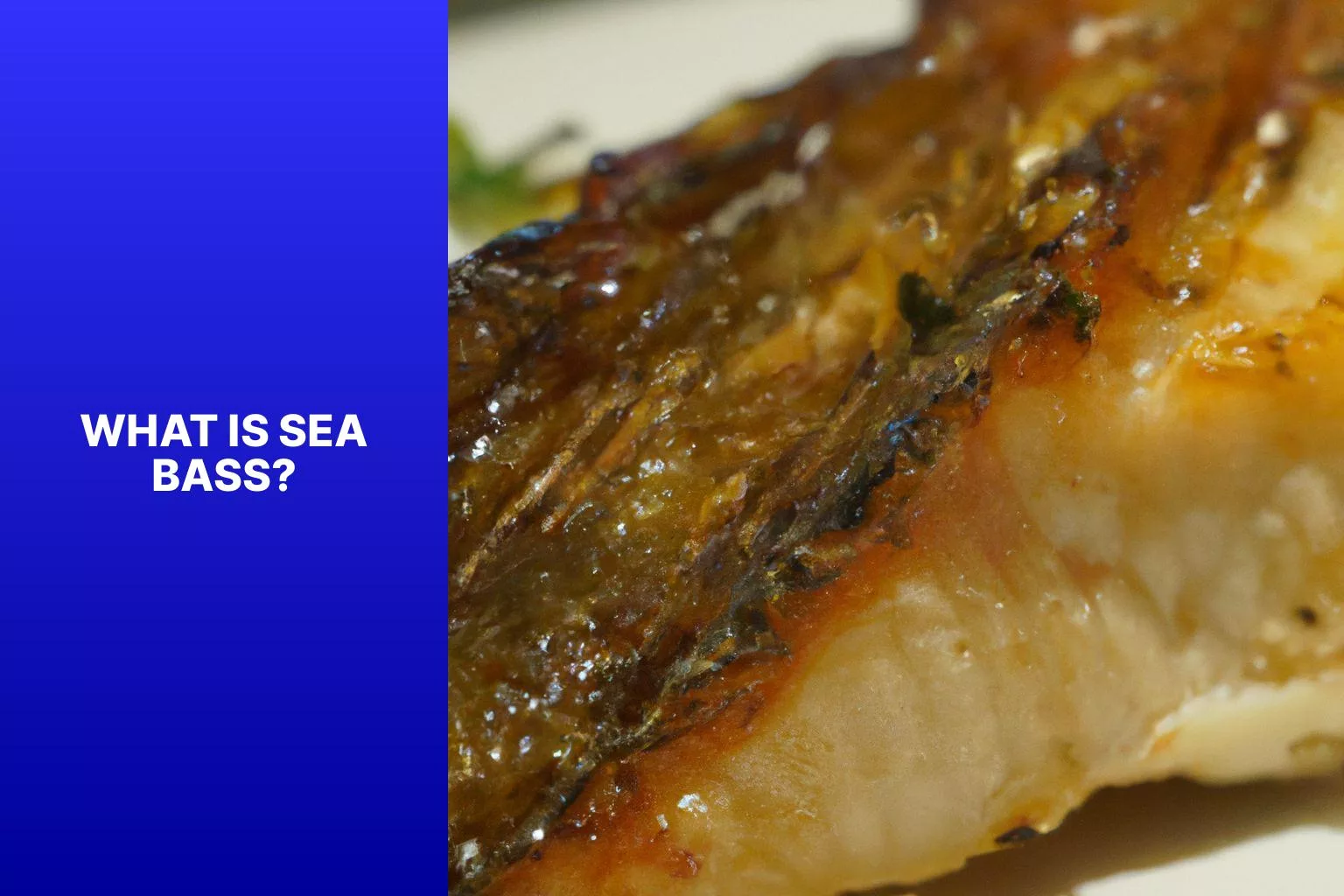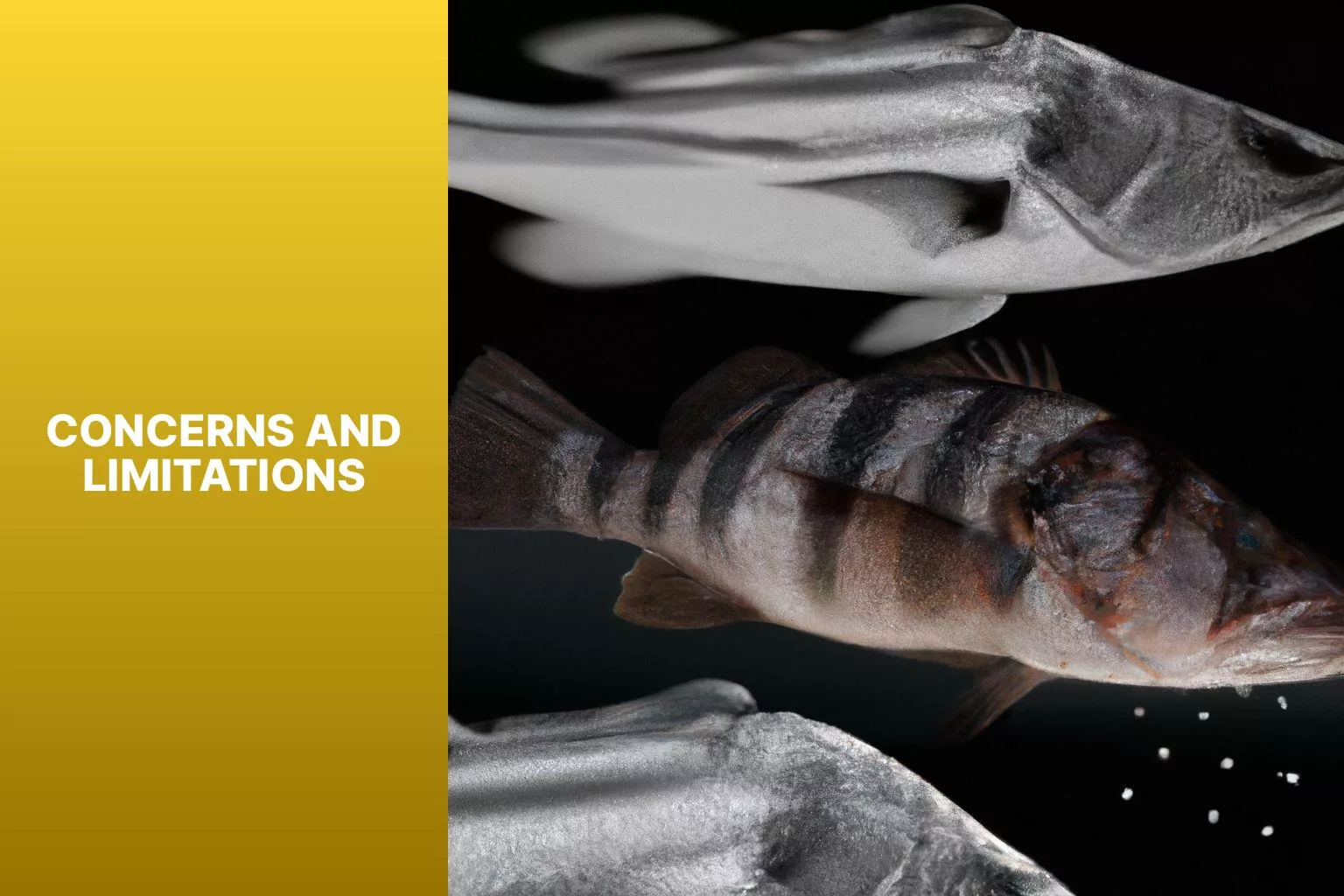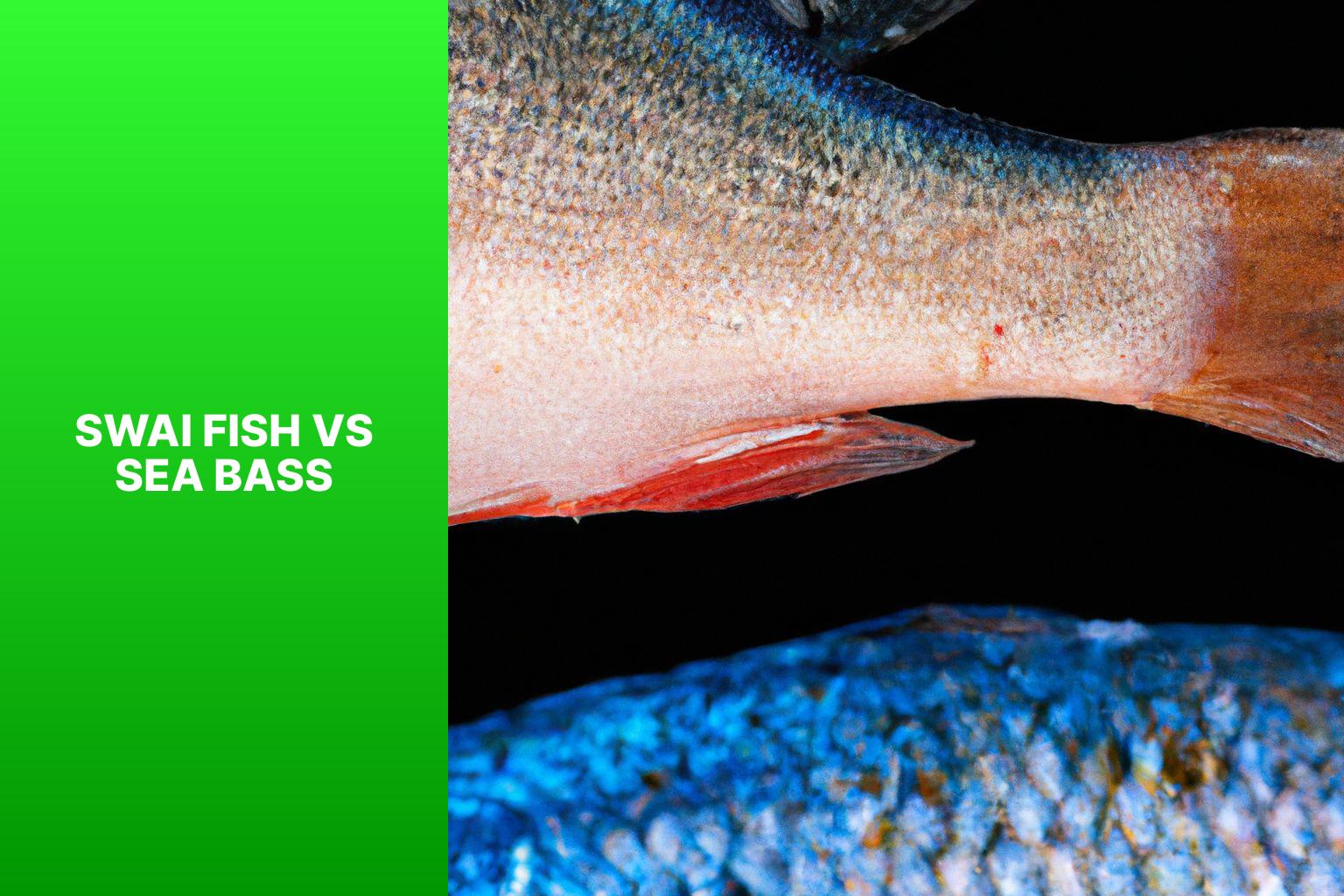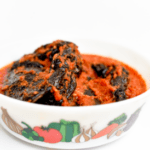Swai fish and sea bass are both popular choices in seafood, but they have distinct differences in terms of flavor, texture, nutritional value, environmental impact, cost, and preferred cooking methods. Understanding these differences can help you make informed decisions when it comes to choosing between these two types of fish.
Swai fish, also known as Pangasius, is a freshwater fish that is often compared to catfish. It has a mild and slightly sweet flavor, with a moist and tender texture. On the other hand, sea bass is a saltwater fish that offers a more delicate flavor and a firm and flaky texture.
When it comes to nutritional value, swai fish is a good source of protein and omega-3 fatty acids, which are essential for heart health. Sea bass, on the other hand, is also rich in protein and omega-3s, but it tends to have higher levels of these nutrients compared to swai fish.
In terms of environmental impact, there are concerns about the farming practices associated with swai fish, as it is often imported from countries with lax regulations. Sea bass, depending on the source and farming practices, may also have some environmental concerns. It is important to consider sustainable and responsible sourcing when choosing either of these fish.
In terms of cost, swai fish is generally more affordable compared to sea bass, which is considered a premium fish. The price difference is partly due to the availability and demand for sea bass.
When it comes to cooking methods, swai fish is versatile and can be baked, grilled, or fried. Sea bass, on the other hand, is often best when prepared with simple methods like steaming or pan-searing to preserve its delicate flavor and texture.
Both swai fish and sea bass offer health benefits due to their nutritional content, including supporting heart health and providing essential nutrients. However, it’s important to note that there may be concerns and limitations associated with both types of fish, such as potential contaminants or sourcing issues. It is advisable to choose fish from trusted and sustainable sources to minimize these concerns.
By understanding the differences and considering factors such as flavor, texture, nutritional value, environmental impact, cost, and cooking methods, you can make an informed decision when choosing between swai fish and sea bass for your seafood dishes.
Key takeaway:
- Swai fish vs sea bass: Swai fish and sea bass are both popular seafood options with distinct characteristics and differences.
- Flavor and texture: Swai fish has a milder and sweeter flavor compared to the rich and buttery taste of sea bass. Additionally, swai fish has a softer and more delicate texture, whereas sea bass has a firmer and meatier texture.
- Nutritional value: Sea bass is a healthier choice as it is higher in omega-3 fatty acids, protein, and essential nutrients compared to swai fish.
- Environmental impact: Swai fish farming has a lower environmental impact due to its higher feed conversion ratio and less dependence on wild fish stocks. On the other hand, sea bass farming can have negative environmental consequences due to the use of wild-caught fish for feed.
- Cost: Swai fish is generally more affordable and budget-friendly compared to sea bass.
- Cooking methods: Swai fish is versatile and can be prepared in various ways including baking, grilling, or frying. Sea bass is often grilled or pan-seared to preserve its delicate flavor and texture.
- Health benefits of swai fish: Swai fish is a good source of lean protein and contains essential nutrients like vitamins B12 and D, selenium, and phosphorus.
- Health benefits of sea bass: Sea bass is rich in omega-3 fatty acids, which can promote heart health and reduce inflammation in the body. It also provides vitamins B6 and B12, magnesium, and potassium.
- Concerns and limitations: Consumers should be aware of certain concerns associated with swai fish, such as its origin and potential for contaminants. Sea bass may have higher mercury levels, limiting its consumption for pregnant women or those with mercury sensitivity.
What is Swai Fish?
Swai fish, also known as Iridescent shark or Pangasius hypophthalmus, is a type of freshwater fish native to Southeast Asia. It is commonly found in rivers and commercial fish farms in countries like Vietnam, Thailand, and Cambodia. Here are some key characteristics of Swai fish:
- Appearance: Swai fish has a slender, elongated body with a silver-gray color and a shimmering iridescent sheen, which gives it the name “Iridescent shark.”
- Size: It can grow to a considerable size, with adults reaching lengths of up to 4 to 6 feet (1.2 to 1.8 meters) and weighing around 30 to 60 pounds (13.6 to 27.2 kilograms).
- Taste and Texture: Swai fish has a mild, slightly sweet flavor and a tender, flaky texture. Its flesh is white and delicate.
- Diet: In the wild, Swai fish is primarily a carnivorous predator, feeding on smaller fish and crustaceans. In fish farms, they are often fed a diet of commercial fish pellets.
- Availability and Affordability: Swai fish is widely available and is known for being relatively more affordable compared to other types of fish.
- Cooking Methods: Swai fish is versatile and can be prepared using various cooking methods, including baking, grilling, pan-frying, and poaching. It is often used in dishes such as fish tacos, fish curry, or as a substitute for other white fish varieties.
It’s important to note that while Swai fish is popular and widely consumed, there have been concerns about its farming practices and sustainability. It is advisable to ensure that the Swai fish you purchase comes from reputable sources that follow sustainable and responsible aquaculture practices.
What is Sea Bass?


Photo Credits: Kabaia.Com by Gerald Hill
Sea Bass refers to a group of marine fish species that are highly sought after for their culinary qualities. Sea Bass is known for its delicate flavor, firm texture, and versatility in cooking. Here are some key characteristics of Sea Bass:
- Species: Sea Bass is a common name used for various fish species belonging to the family Centropristis, Dicentrarchus, Latidae, and Morone, among others.
- Distribution: Sea Bass can be found in both saltwater and brackish water habitats around the world. They are commonly found in the Atlantic Ocean, Mediterranean Sea, and the Pacific Ocean.
- Size: Depending on the species, Sea Bass can range in size from small to large. Some species can grow up to several feet in length and weigh several pounds.
- Appearance: Sea Bass generally have an elongated body with a streamlined shape. They often have a silvery or grayish coloration with some species exhibiting distinctive patterns or markings.
- Culinary Uses: Sea Bass is highly regarded for its culinary value. The flesh is white, moist, and flaky, making it suitable for various cooking methods such as grilling, baking, steaming, and frying.
- Popular Species: Some popular species of Sea Bass include the European Sea Bass (Dicentrarchus labrax), Black Sea Bass (Centropristis striata), and Chilean Sea Bass (Dissostichus eleginoides).
Sea Bass is a favored choice among seafood enthusiasts and professional chefs due to its pleasing taste and culinary versatility.
Comparison between Swai Fish and Sea Bass
When it comes to choosing between Swai Fish and Sea Bass, we often find ourselves caught in a delicious dilemma. So, let’s dive into the deep waters of this comparison. In the first section, we’ll explore the flavor and texture of these two fishes, tantalizing your taste buds. Then, we’ll reel in the facts about their nutritional value, uncovering the health benefits. Next, we’ll navigate through the environmental impact and cost factors, making an eco-conscious choice. We’ll cast our attention on the various cooking methods, transforming these fishes into culinary masterpieces. Get ready for a mouthwatering showdown!
Flavor and Texture
The flavor and texture of Swai fish and Sea Bass can vary significantly. Here is a comparison of the two:
| Aspect | Swai Fish | Sea Bass |
|---|---|---|
| Flavor | Mild and slightly sweet | Mild, buttery, and delicate |
| Texture | Tender and flaky | Firm, moist, and flaky |
Swai fish has a milder flavor compared to the buttery and delicate flavor of Sea Bass. In terms of texture, Swai fish is tender and flaky, while Sea Bass offers a firm, moist, and flaky texture.
This difference in flavor and texture allows individuals to choose based on their personal preference and the specific dishes they are preparing.
Fun Fact: The flavor and texture of fish can vary based on their habitat and diet. Variations in water temperature, salinity, and prey availability can all contribute to the unique taste and texture of different fish species.
Nutritional Value
The nutritional value of Swai fish and Sea Bass can vary slightly. Here are some key points to consider:
Having a balanced diet that includes a variety of foods is important to meet your nutritional needs. Both Swai fish and Sea Bass can be nutritious choices as part of a healthy diet. It’s important to note that individual nutritional needs may vary, so it’s always a good idea to consult with a healthcare professional or registered dietitian for personalized advice.
Environmental Impact
The environmental impact of both Swai fish and Sea Bass should be considered when making a choice:
- Overfishing: Swai fish, also known as Pangasius, has been associated with concerns of overfishing due to its popularity and demand. Sea Bass, on the other hand, also faces overfishing concerns in certain regions, but sustainable farming practices are being implemented to mitigate this issue.
- Habitat destruction: Swai fish farming, especially in certain regions, has been linked to habitat destruction and the conversion of natural ecosystems into fish farms. Sea Bass farming can also have negative effects on local habitats, but sustainable farming methods can help minimize these impacts.
- Chemical usage: Some Swai fish farms have been known to use chemicals and antibiotics to control diseases and promote growth, which can have negative effects on water quality and ecosystem health. Sea Bass farming also involves the use of chemicals, but with proper regulations and management, the environmental impact can be minimized.
- Capture of non-target species: Both Swai fish and Sea Bass fishing methods can result in the unintentional capture of non-target species, known as bycatch. Bycatch can have detrimental effects on marine ecosystems and biodiversity.
- Carbon footprint: The transportation and distribution of both Swai fish and Sea Bass can contribute to greenhouse gas emissions and carbon footprint. Opting for locally sourced and sustainable options can help reduce the environmental impact in this aspect.
Historically, the environmental impact of fish farming and fishing practices has raised concerns about the sustainability of seafood consumption. Advancements in sustainable farming methods, regulations, and consumer awareness have led to improvements in the industry. It is crucial to choose responsibly sourced seafood to minimize the environmental impact and support sustainable practices.
Cost
The cost of Swai fish and Sea Bass can vary depending on several factors, including location, availability, and market demand. Here is a comparison of the average cost per pound of these two fish:
| Fish | Average Cost per Pound |
|---|---|
| Swai fish | $2.99 |
| Sea Bass | $10.99 |
Please note that these prices are approximate and can vary. Swai fish generally tends to be more affordable compared to Sea Bass, making it a popular choice for budget-conscious consumers. Sea Bass, on the other hand, is considered a premium fish and is often priced higher due to its popularity and limited availability.
When considering the cost, it is important to also take into account the size of the fish and how much you need for your specific recipe or meal. The cost of Swai fish and Sea Bass could be influenced by factors like the season, fishing practices, and quality of the fish.
Fact: Sea Bass is known for its delicate flavor and firm, white flesh. It is a versatile fish that can be prepared in various ways, from grilling to baking or pan-searing. Its higher cost is often justified by its exceptional taste and culinary possibilities.
Cooking Methods
The cooking methods for swai fish and sea bass can greatly impact the flavor and texture of the final dish. Here is a table comparing the best cooking methods for both:
| Cooking Methods | Swai Fish | Sea Bass |
| Grilling | Grilling swai fish can enhance its mild flavor and give it a nice smoky taste. It is recommended to marinate the fish before grilling to add more flavor. | Grilled sea bass is delicious and brings out the natural flavors of the fish. Season it with herbs and spices and grill it over medium heat for best results. |
| Baking | Baking swai fish is a healthy and easy cooking method. It can be seasoned with herbs, spices, or a lemon butter sauce and baked in the oven until it flakes easily with a fork. | Sea bass is perfect for baking as it retains its moisture and flavor. Bake it with a marinade or a simple lemon and herb mixture for a tasty dish. |
| Pan-Frying | Swai fish can be pan-fried in a little oil for a crispy and flavorful dish. It cooks quickly, so be careful not to overcook it. | Pan-frying sea bass creates a crispy skin and a moist, flaky interior. Use a non-stick pan and a bit of oil to prevent sticking. |
| Steaming | Steaming swai fish is a healthy and delicate cooking method. It preserves the natural flavors and nutrients of the fish. Serve it with a light sauce or a drizzle of soy sauce. | Steaming is a popular method for cooking sea bass as it keeps the fish moist and tender. Steam it with ginger, garlic, and soy sauce for a delicious Asian-inspired dish. |
Pro-tip: Regardless of the cooking method, be sure to properly season the fish with salt, pepper, and other desired spices to enhance its flavors. Always cook fish to the recommended internal temperature to ensure it is safe to eat and enjoy!
Health Benefits of Swai Fish
Swai fish offers several health benefits due to its nutritional profile:
- High Protein Content: Swai fish is a good source of high-quality protein, which is essential for building and repairing tissues, as well as supporting muscle growth.
- Low in Calories: Swai fish is relatively low in calories, making it a suitable choice for individuals looking to manage their weight or reduce calorie intake.
- Rich in Omega-3 Fatty Acids: Swai fish contains omega-3 fatty acids, which are beneficial for heart health. These fatty acids have been associated with reducing inflammation, improving blood circulation, and lowering the risk of heart disease.
- Source of Essential Minerals: Swai fish provides essential minerals such as selenium, phosphorus, and magnesium. These minerals play a vital role in maintaining healthy bones, regulating blood pressure, and supporting overall body function.
- Low in Mercury: Swai fish is considered to have low mercury levels, making it a safer choice compared to some other types of fish that may accumulate higher levels of mercury.
- Versatile and Easy to Prepare: Swai fish has a mild flavor and a firm texture, making it versatile and suitable for various cooking methods such as baking, grilling, or pan-frying. It can be easily incorporated into a variety of dishes.
It is important to note that while swai fish offers health benefits, it is essential to consume it as part of a well-balanced diet that includes a variety of other nutrient-rich foods.
Health Benefits of Sea Bass
Sea Bass offers several health benefits, making it a nutritious choice for seafood enthusiasts:
- High in Omega-3 Fatty Acids: Sea Bass is rich in omega-3 fatty acids, particularly EPA (eicosapentaenoic acid) and DHA (docosahexaenoic acid). These essential fatty acids are known for their anti-inflammatory properties and are beneficial for heart health.
- Good Source of Protein: Sea Bass is a good source of high-quality protein. Protein is essential for building and repairing tissues, supporting muscle growth, and maintaining a healthy immune system.
- Rich in Minerals: Sea Bass contains important minerals such as selenium, magnesium, and potassium. Selenium is an antioxidant that supports the immune system and helps protect cells from damage. Magnesium plays a role in various bodily functions, including nerve and muscle function, while potassium helps regulate blood pressure.
- Low in Calories and Fat: Sea Bass is relatively low in calories and fat compared to other types of fish. This makes it a suitable choice for individuals looking to manage their weight or reduce their overall fat intake.
- Good Source of B Vitamins: Sea Bass is a good source of various B vitamins, including niacin, vitamin B6, and vitamin B12. These vitamins play a crucial role in energy metabolism, brain function, and the production of red blood cells.
- Rich in Minerals: Sea Bass contains important minerals such as selenium, magnesium, and potassium. Selenium is an antioxidant that supports the immune system and helps protect cells from damage. Magnesium plays a role in various bodily functions, including nerve and muscle function, while potassium helps regulate blood pressure.
- Delicious Flavor and Versatility: Sea Bass has a mild and delicate flavor, making it appealing to many palates. It can be prepared in various ways, including grilling, baking, or pan-searing, allowing for a wide range of culinary options.
By incorporating Sea Bass into a balanced diet, individuals can enjoy its health benefits while savoring its delicious taste.
Concerns and Limitations


Photo Credits: Kabaia.Com by Frank Flores
While both swai fish and sea bass have their own unique qualities, it’s important to consider the following concerns and limitations:
- Environmental Impact: Swai fish is often associated with environmental concerns due to unsustainable farming practices in certain regions. It is crucial to source swai fish from reputable suppliers who prioritize sustainable aquaculture methods.
- Mercury Levels: Sea bass, particularly larger and older individuals, may contain higher mercury levels. It is essential to consume sea bass in moderation and consider the recommendations of health organizations regarding fish consumption for specific populations.
- Overfishing: Sea bass populations have faced overfishing in some regions, leading to concerns about their sustainability. It is important to choose sea bass that is responsibly sourced and harvested from well-managed fisheries.
- Quality and Taste: Swai fish is known for its mild flavor and delicate texture, while sea bass has a richer and more robust taste. Personal preference plays a significant role in determining which fish is more enjoyable to consume.
- Availability and Cost: Swai fish is generally more affordable and widely available compared to sea bass, which may be pricier and less accessible in certain markets. Consider your budget and regional availability when making a choice.
- Cooking Methods: Swai fish is versatile and suitable for various cooking methods, including frying, grilling, and baking. Sea bass, with its firm flesh, is well-suited for grilling, pan-searing, or oven-roasting. The choice depends on the desired cooking technique and flavor profile.
- Culinary Uses: Swai fish is often utilized in a variety of dishes, including stir-fries, fish tacos, and fish cakes. Sea bass, with its robust flavor, is well-suited for dishes where its taste can shine, such as ceviche or grilled fillets.
By considering these concerns and limitations, you can make an informed decision regarding your preference for swai fish or sea bass based on factors such as sustainability, health considerations, taste, availability, and culinary needs.
Some Facts About Swai Fish vs Sea Bass:
- ✅ Swai fish and sea bass are both popular fish options in the market. (Source: Our Team)
- ✅ Swai fish is imported from Vietnam, while sea bass can be found in various regions. (Source: Our Team)
- ✅ Swai fish has a mild, buttery flavor similar to sea bass. (Source: Our Team)
- ✅ Swai fish is more affordable compared to sea bass. (Source: Our Team)
- ✅ Sea bass has a higher omega-3 fat content compared to swai fish. (Source: Our Team)
Frequently Asked Questions
What is the difference between swai fish and sea bass?
Swai fish and sea bass are both types of fish with distinct characteristics. Swai fish, also known as Asian catfish, is primarily imported from Vietnam and has a mild taste and neutral flavor. On the other hand, sea bass is a fatty fish known for its rich flavor and delicate texture. Sea bass is commonly found in both saltwater and freshwater environments, while swai fish is predominantly found in freshwater sources like the Mekong Lake in China.
What are the nutritional differences between swai fish and sea bass?
When comparing the nutrition content of swai fish and sea bass, sea bass generally offers more benefits. Sea bass is a good source of omega-3 fatty acids, which are heart-healthy fats that provide various health benefits. Swai fish, on the other hand, contains less omega-3 fat. Sea bass also tends to have higher levels of vitamins and minerals compared to swai fish.
Are there any health concerns associated with swai fish and sea bass?
While both swai fish and sea bass are considered safe to eat, there are some health concerns associated with swai fish. Swai fish farms can have a negative impact on the ecosystem, and there have been instances of farms illegally dumping waste products into rivers. Additionally, swai fish farms often use chemical agents and antibiotics, which can lead to bacterial resistance and reduce the effectiveness of medicine in people. It is important to choose swai brands with eco-certification and cook the fish well to ensure better quality and safety.
Is swai fish genetically modified?
No, swai fish is not genetically modified. It is a freshwater fish that is native to the Mekong Lake in China. However, due to farming practices, most swai fish in the US market are imported from Vietnam and sold filleted and frozen. It is important to look for certifications like Best Aquaculture Practices (BAP) or ASC Farmed Pangasius to ensure the swai fish is sourced responsibly.
Can swai fish be a healthy option for consumption?
Swai fish, although affordable and mild in taste, has a mediocre nutritional profile. Concerns about production practices and mislabeling have also raised doubts about its safety. As a result, it may be best to consider healthier alternatives such as sea bass, salmon, haddock, or other types of fish. These alternatives often offer higher nutritional value and are sourced responsibly.
What are some tips for cooking swai fish?
Swai fish can be cooked in various ways, such as baking, frying, grilling, or steaming. To enhance its flavor, it is often marinated in savory sauces or rubs. Popular swai fish dishes include seasoned swai fish fillet, baked swai fish with creamy sauces, and spicy catalina swai. It is important to ensure the fish is cooked thoroughly to eliminate any potential risks.




